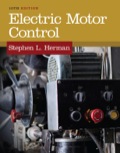
Electric Motor Control
10th Edition
ISBN: 9781305177611
Author: Herman
Publisher: Cengage
expand_more
expand_more
format_list_bulleted
Textbook Question
Chapter 3, Problem 26SQ
Select the best answer for each of the following.
When the reset button does not reestablish the control circuit after an overload, the probable cause is
- a. the overload heater is too small.
- b. the overload trip has not cooled sufficiently.
- c. the auxiliary contacts are defective.
- d. the overload heater is burned out.
Expert Solution & Answer
Want to see the full answer?
Check out a sample textbook solution
Students have asked these similar questions
DO NOT USE AI NEED HANDWRITTEN SOLUTION
No chatgpt pls will upvote
NO AI PLEASE
Chapter 3 Solutions
Electric Motor Control
Ch. 3 - Prob. 1SQCh. 3 - How many poles are required on motor starters for...Ch. 3 - If a motor starter is installed according to...Ch. 3 - Using the time limit overload or the dashpot...Ch. 3 - What causes the AC hum or chatter in AC...Ch. 3 - What is the phase relationship between the flux in...Ch. 3 - In what AC and DC devices is the principle of the...Ch. 3 - What does the electrician look for to remedy the...Ch. 3 - What type of protective enclosure is most commonly...Ch. 3 - What advantage is there in using combination...
Ch. 3 - What safety feature does the combination starter...Ch. 3 - Prob. 12SQCh. 3 - How is the size of the overload heaters selected...Ch. 3 - What type of motor starter enclosure (include NEMA...Ch. 3 - Prob. 15SQCh. 3 - Prob. 16SQCh. 3 - Prob. 17SQCh. 3 - Prob. 18SQCh. 3 - Select the best answer for each of the following....Ch. 3 - Prob. 20SQCh. 3 - Prob. 21SQCh. 3 - Select the best answer for each of the following....Ch. 3 - Prob. 23SQCh. 3 - Select the best answer for each of the following....Ch. 3 - Select the best answer for each of the following....Ch. 3 - Select the best answer for each of the following....Ch. 3 - Select the best answer for each of the following....Ch. 3 - Prob. 28SQCh. 3 - Select the best answer for each of the following....Ch. 3 - Prob. 30SQCh. 3 - Prob. 31SQCh. 3 - What is the difference between a grounded control...Ch. 3 - A control transformer has a primary voltage of 480...
Knowledge Booster
Learn more about
Need a deep-dive on the concept behind this application? Look no further. Learn more about this topic, electrical-engineering and related others by exploring similar questions and additional content below.Similar questions
- Solve this. find the initial conditions ic(0-) and vc(0-) the switch opens at t=0 so it's closed at t=0- dont copy the response from previous because it's wrong. please solve in great detail explaining everything step by step. now the way i thought about it is Getting millman voltage (1/3)-2 / (1/3)+(1/2) and it's the same as Vc as both are nodal voltages but i wasn't sure if correct. because i didnt take into consideration all voltages (Vc here) even though it's the same so i'm quite confused. please explain to me if i'm correct and if not tell me why and where my thinking was flawed. thank youarrow_forward3. Consider the RL circuit with a constant voltage source shown in the diagram below. The values of the resistor, inductor, and input voltage are R = 100, L = 100 mH, and Vo = 12V, respectively. Vo - Ti(t) R w When the switch closes at time t = 0, the current begins to flow as a function of time. It follows from Kirchoff's voltage law that the current is described by the differential equation di(t) L dt + Ri(t) = Vo⋅arrow_forward4. Consider the RL circuit with a sinusoid voltage source shown in the diagram below. The values of the resistor, inductor, input voltage amplitude and frequency are R = 5, L = 50mH, and Vo = 10 V, respectively. The input voltage frequency w is variable. Assume that the circuit has reached steady state. Voejwt + ↑i(t) R سيد The input voltage can be described using the complex sinusoid function V(t) = Voejwt The current is given by a sinusoid with same the frequency was the input voltage, but a different magnitude and different phase. The physical voltage and current are obtained by taking the real part. In complex form, the current is given by i(t) Vo ejwt R1+jw/ The differential equation that describes the current follows from Kirchoff's voltage law, and is given by di(t) L + Ri(t) = Voejwt dtarrow_forward
- 2. (4 marks) Use the real and imaginary parts of ĉejut, where ñ = a + jb = e³, to show that: c cos(wt) = acos(wt) – bsin(wt), csin(wt) = a sin(wt) + bcos(wt). Describe the relations between a, b, c, and o.arrow_forwardCompute the thevenin equivalent between the two terminals a-b zeq and veq show all your steps and explain clearly what you did.arrow_forwardI need help with this problem and an explanation of the solution for the image described below. (Introduction to Signals and Systems)arrow_forward
- I need help with this problem and an explanation of the solution for the image described below. (Introduction to Signals and Systems)arrow_forwardDon't use ai to answer I will report you answerarrow_forwardconpute the thevenin equivalent between the terminals a and b Veq and Zeq note that the voltage source has 5e^j0 V the other values if not clear are -8j 8 20 and 5ohmsarrow_forward
arrow_back_ios
SEE MORE QUESTIONS
arrow_forward_ios
Recommended textbooks for you

 Electricity for Refrigeration, Heating, and Air C...Mechanical EngineeringISBN:9781337399128Author:Russell E. SmithPublisher:Cengage Learning
Electricity for Refrigeration, Heating, and Air C...Mechanical EngineeringISBN:9781337399128Author:Russell E. SmithPublisher:Cengage Learning


Electricity for Refrigeration, Heating, and Air C...
Mechanical Engineering
ISBN:9781337399128
Author:Russell E. Smith
Publisher:Cengage Learning
Pressure Sensors with Display; Author: Balluff Worldwide;https://www.youtube.com/watch?v=HqAV2xjCLxE;License: Standard Youtube License